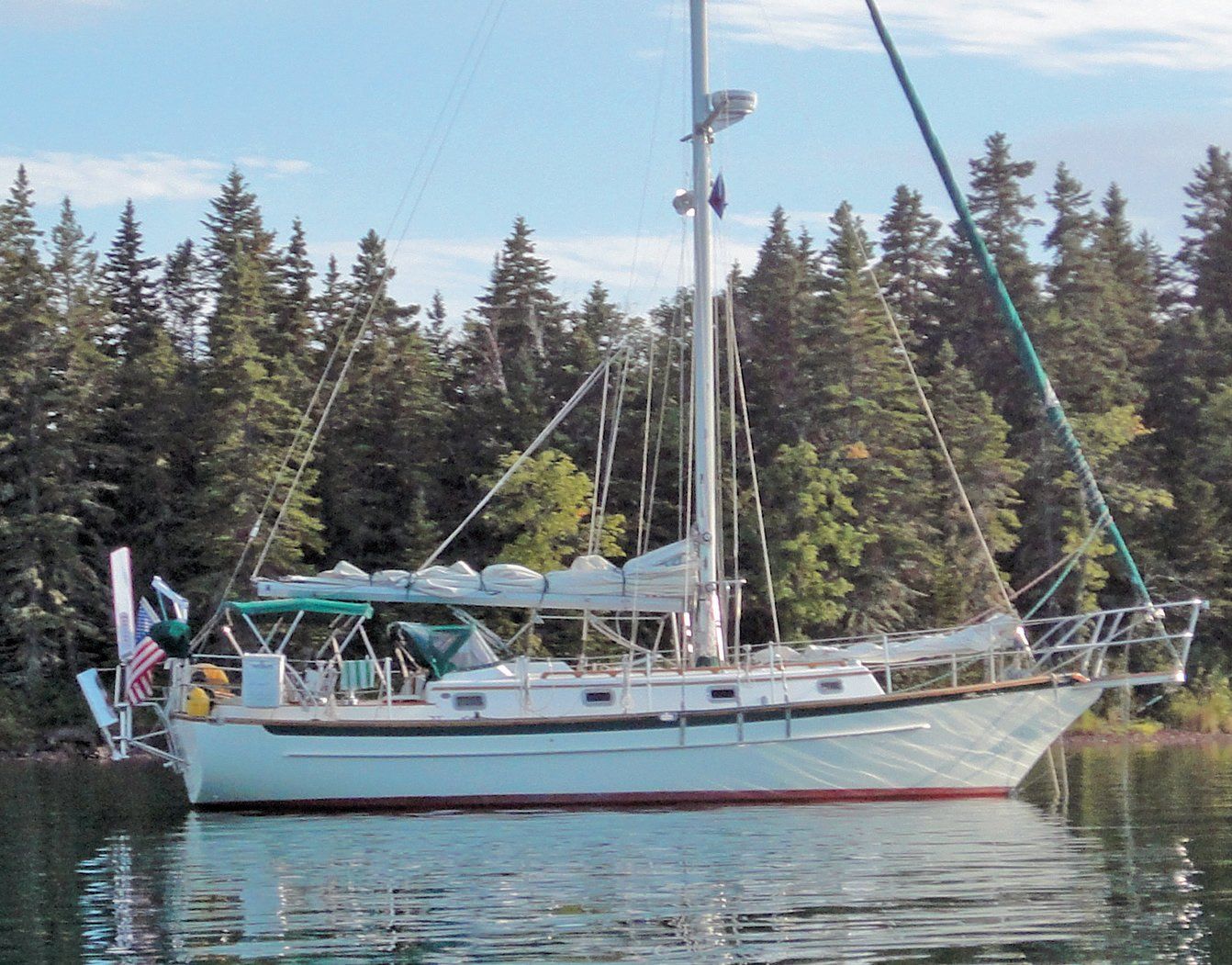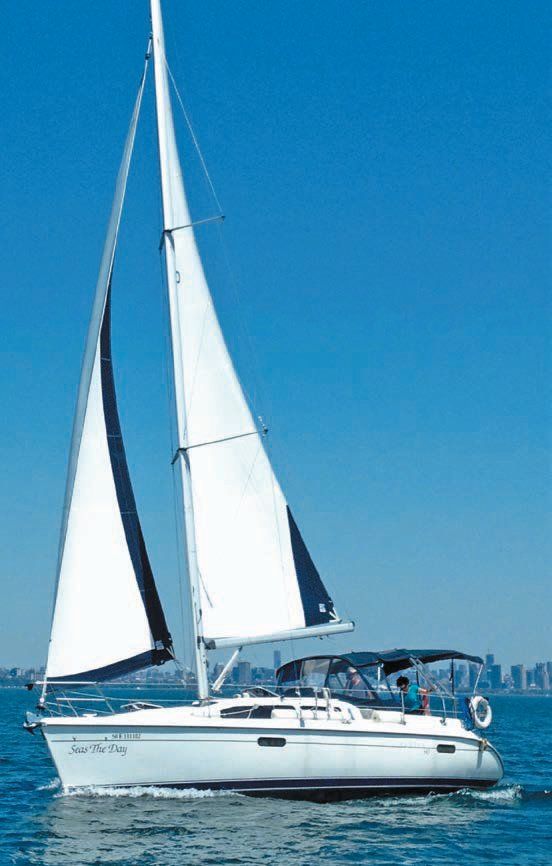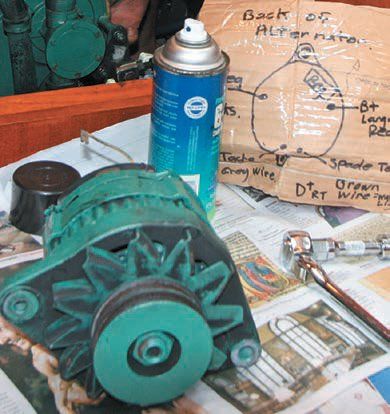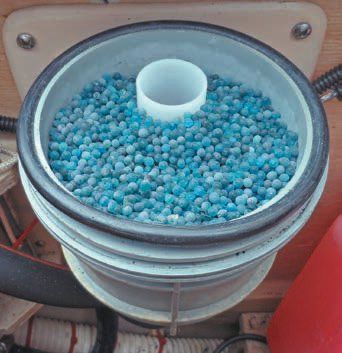Iron vs. Lead Ballast keel
In response to your recent blog post discussing ballast keel material (Inside Practical Sailor, Lead vs. Iron Ballast,) Cabo Rico switched from steel to lead ballast castings with the first 38 Pilot model to make more space for the engine which moved forward on that model. This change also included the first Cabo Rico 34 and all Cabo Rico 38 models, as of 1989. However, the key factor with the older Cabo Rico 38s and its predecessor, the Tiburon 36, is that all the iron ballast-and later the lead- is fully encapsulated in a resin and sand mixture that takes three full days to cure. No air, no rust on the iron ballast. The ballast pieces are wedge-shaped so they can’t move. Then the whole ballast area is covered over with structural fiberglass laminates added to the structural one-piece hull. We have never had a report of rusting ballast on those earlier yachts. The hull is very thick in that area, hence no real chance of a hole. Indeed, we have never had a report of a hole in a hull nor lost a rudder at sea, ever.
Fraser Smith, Owner, Cabo Rico Yachts


Galley Spark Fix
In a recent Inside Practical Sailor blog post you discussed the piezo ignition routinely failing on some models of galley stoves. The problem on our stove was the ground wire that was riveted to the chassis. We replaced the rivet with a screw and have had no problems since.
James Ripple
Hylas 46, Caper
Canton, OH
Several other readers responded that they also traced this problem to a short in the ground circuit.
Nikwax for Mold Prevention?
In your recent Inside Practical Sailor blog post, Home-made Mildew Preventers that Really Work, you show your tester using a bottle of Nikwax TX Direct waterproofing spray to apply product. However, this product is not mentioned anywhere as being one of the ones tested. I’m guessing your tester just used the empty container. Please, if you’re going to use the empty container of some other product, maybe don’t use a photo of it in the publication. It’s just confusing and misleading. Or if you used that product, why is it not mentioned in the article?
Barbara Cook
Columbia 30 Outrageous
Moss Landing, California
Water repellent treatments help canvas and ropes dry quickly, depriving mildew of the main thing it needs to thrive-dampness. Our last report on products in this category was Keeping Canvas in Tip-top Shape (see PS February 2014 online). Most of the fabric sealing products we tested need to be re-applied every three-to-six months, depending on the exposure to weathering, especially UV. Confusion is our nemesis, so we will be strive for clarity the next time we depict a spray bottle in action.
Damp Rid for Mildew
Regarding your recent report in Practical Sailor online, Homemade Mildew Preventers That Really Work, at the close of every season when my boat is on the hard I pour about 1 to 2 inches of DampRid (unscented) into about 20 plastic tubs (like those from cottage cheese, soft butter, etc.) and place them all around my boat in the lowest spots I can access. In the spring I find most of them filled with water, which I empty. I then rinse the containers and store them for next season. Boat smells great, never a sign of mildew.
Alan Silverman
Hanse 370e, Legacy
South Haven, MI
We tested absorbent material and they worked well for small spaces on boats. (See PS November 2012, High and Dry for Winter Storage online). However, none of the chemical desiccan’ts worked as well as a dehumidifier (see Dehumidifier Field Test, June2013).
Screwhole Repairs
Regarding your recent report on repairing screw holes (A Stronger Screwhole Repair, PS May 2018), the screw is placed in before epoxy cures can it be backed out later? Or should the screw be lightly coated with mold release?
Frank Tansley
1986 Hans Christian 41T Grace
Dana Point, CA
The adhesive bond is often not enough to prevent unscrewing or cause tearing when you unscrew, but why risk it? The epoxy-metal bond would almost surely make it hard to remove any long, small diameter screws that might shear-especially if corroded. Mold release is a good idea if you plan to remove and re-bed. Boat wax can work as a release agent.


Alternator Achilles Heel
Regarding your recent online blog post on spares (Engine Spares for the Cruising Sailor, Inside Practical Sailor) and the suggestion to carry spare alternator brushes. The brushes on an alternator do not carry the full output current. They carry only the field current which is only about 5 percent of the rated output. The brushes in modern alternators are designed to last the lifetime of the alternator. More common failure items are the hard-working (read high operating temperature) rectifier assembly, the stator (where the output power is generated), and the bearings. High-output alternators are particularly susceptible to failure since doubling the output current results in quadrupling the heat generated internally. I recommend carrying a complete unit as aspare.
Eli Melnick
Hunter 340
Seas the Day,
Lake Ontario
Seacock Quandary
Regarding the recent discussion about what to do with engine seacocks while you are away from the boat (Mailport, PS May 2018). Heres the way we make certain the seacock is opened when starting. To the engine key ring we attach a clip-ring with a laminated 3-inch diameter, vivid yellow tag with the following printed in bold black letters, on both sides, upside-down, and right-side-up: OPEN RAW WATER INTAKE BEFORE STARTING ENGINE. When the seacock is open, we hang the tag on the seacock lever, then replace it on the engine key ring immediately upon closing the seacock. Only a non-reader of English could possibly fail to comprehend it.
Dave Newberg
Cabo Rico 34, Cigano,
Cornucopia WI, Lake Superior
Beware of Chlorine
In your recent Inside PS blog post, Homemade Mildew Preventers That Really Work a few readers were unfamiliar with washing soda. You can find washing soda in most grocery stores in the detergent aisle, usually near Borax, Arm and Hammer brand is most common. When dealing with mildew be wary of using bleach (sodium hypochlorite) or other similar concoctions. This can accelerate a serious form of stainless-steel corrosion called pit corrosion, which is well documented in the marine industry and others.
Bill Barnum
Marine Technician
Vancouver, WA
Fuel Vent Filters?
In your recent Inside Practical Sailor blog post Avoiding Fuel Trouble, I’m surprised you didn’t mention vent filters to minimize water vapor (humidity) getting into the tank. I’ve been using an H2Out for a few years with good results. Two years ago I didn’t and paid the price.
Geoffrey Ferrell
Cabo Rico 38 PH, Callae Jane
West River, Chesapeake
Adding a fuel vent filters can indeed help minimize humidity in the fuel tank. In our testing, we found silicone beads to be much more practical and at least as effective. The carbon pellets used in some of the off-the-shelf filters can clog the vent and be rendered ineffective if they get too saturated. Even humid climates can render them ineffective. We modified the charcoal version by using silicone beads as the filtering agent (see Diesel Tank Vent Filters, January 2014).
Fire Extinguisher Photo
Regarding your recent Inside Practical Sailor blog post, Engine Spares for the Cruising Sailor? Who would put a fire extinguisher in the engine compartment as shown in the photo? That is where the fire starts. Put it outside of the engine compartment. Most of the time there is a hole in the cover that you can fog the compartment with the fire extinguisher to smother the fire.
Gary Mckinney
Via PS Online
We can see how the fire extinguisher in the photo that accompanied post could be mistaken for a handheld fire extinguisher. It is actually part of an automatic fire suppression system designed for engine rooms. These systems are required in many types of passenger-carrying commercial vessels and are increasingly being found in larger sailboats. We reported in detail about both approaches in the recent article Fire Extinguisher Tips for Cruising Sailors, PS October 2017. Fortunately, diesel engine fires are rare.
Corrections
Boot Key Harbor is in Marathon, Florida. Other information appeared in our report on the mooring field there (see Elastic Mooring Systems, PS May 2018 online.)
The June 2018 article, Making a Miniature Dodger did not identify the flexible Sunbrella flap at the front edge of the dodger, which provides a water-tight seal. Weve fixed this in the online version.







































